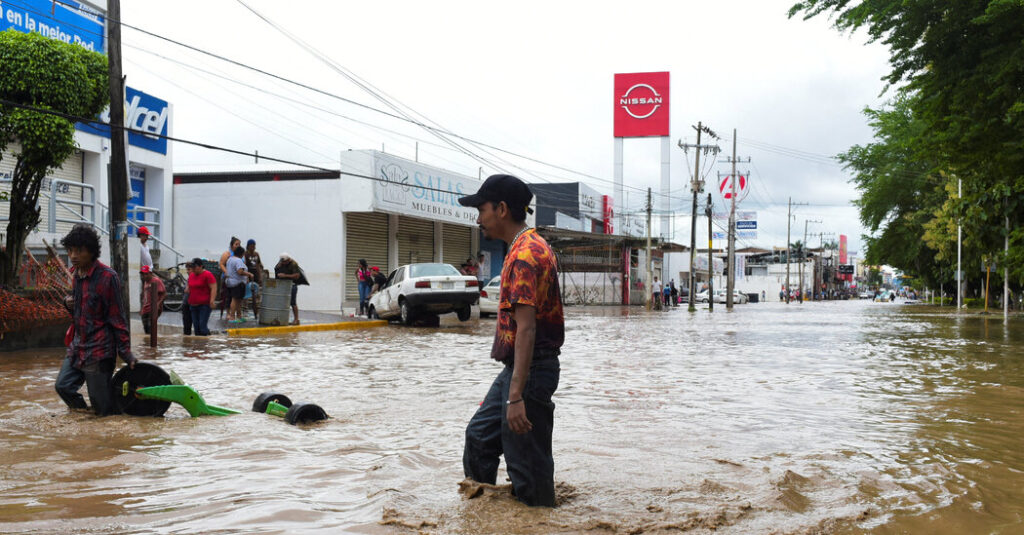Heavy rainfall, linked to the remnants of several tropical storms, has unleashed widespread flooding and deadly landslides across Mexico, leaving behind severe destruction and a growing death toll. Reports indicate that over 150 municipalities across multiple states have been severely affected.
Severe Impact Across Multiple States
States such as Guerrero, Oaxaca, Veracruz, and Puebla have experienced the brunt of the disaster, facing flash floods and slope collapses in mountainous regions. Rivers have swollen beyond capacity, roads have been washed away, and entire communities have been cut off from emergency services. Early reports suggest dozens of fatalities, with concerns that the numbers could rise as rescue teams reach isolated areas.
Video footage circulating online shows vehicles submerged in muddy torrents and neighborhoods inundated after days of relentless rain, emphasizing the scale of the catastrophe.
Emergency Response and Evacuations
Authorities have evacuated thousands of residents to temporary shelters. National rescue teams and the military are actively deployed for search, recovery, and relief operations. Officials warn that saturated soils and unstable slopes continue to pose a high risk of further landslides, urging citizens to remain vigilant.
Meteorological Factors Behind the Disaster
Meteorologists report that the extreme rainfall was caused by moisture from dissipating tropical systems combining with seasonal weather fronts, intensifying precipitation well inland. The resulting landslides have destroyed key transport routes, complicating aid delivery and recovery efforts.
Government Response and Climate Concerns
President Andrés Manuel López Obrador expressed condolences to victims’ families and pledged federal support for rebuilding efforts. He described the disaster as “a stark reminder of the growing vulnerability of communities in the face of intensified weather events.”
As cleanup and recovery continue, Mexico is facing one of its most destructive rainy seasons in recent memory, highlighting the urgent need for resilient infrastructure and adaptation strategies in the face of a changing climate.

